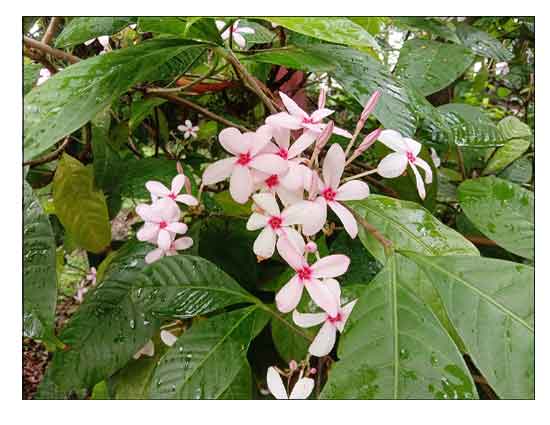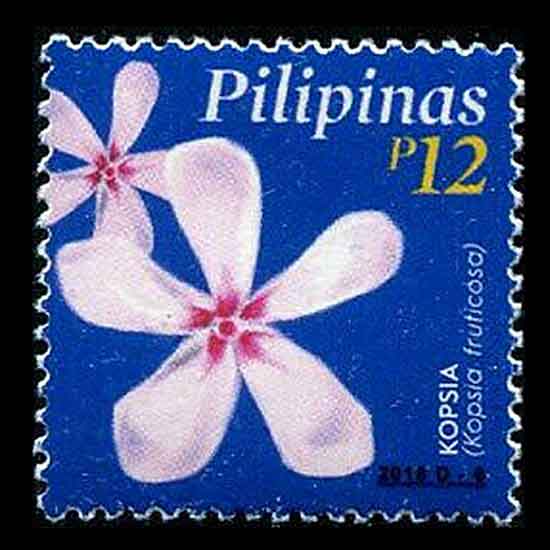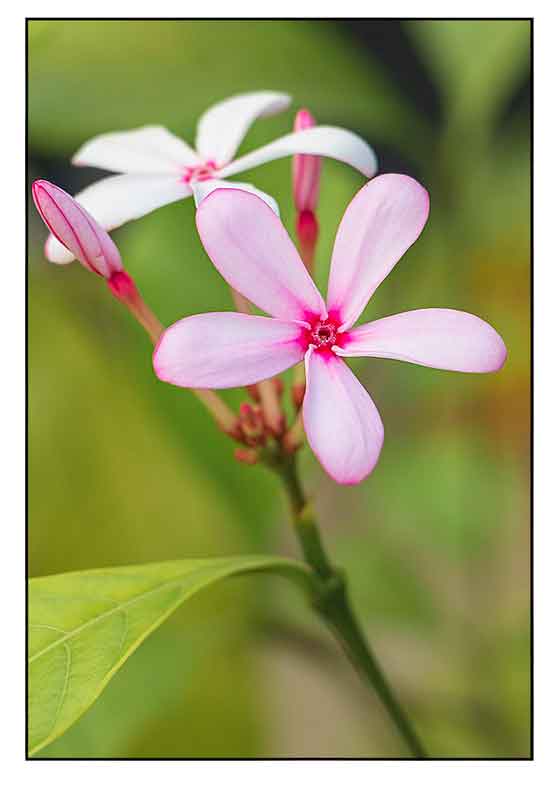
Family • Apocynaceae
Kopsia
Kopsia fruticosa (Roxb.) A.DC.
PINK KOPSIA
Hong hua rui mu
| Scientific names | Common names |
| Calpicarpum roxburghii G.Don. | Kopsia (Philippines) |
| Cerbera fruticosa Roxb. | Pink gardenia (Engl.) |
| Kopsia fruticosa (Roxb.) A.DC. | Pink kopsia (Engl.) |
| Kopsia ornata Mottet | Shrub vinca (Engl.) |
| Kopsia roxburghii (G.Don) Pharm. ex Wehmer | |
| Kopsia vinciflora Blume | |
| Tabernaemontana longiflora Rusby | |
| Tabernaemontana rosea Ten. | |
| Kopsia fruticosa is an accepted species. KEW: Plants of the World Online | |
| Other vernacular names |
| BENGALI: Dakur. |
| CHINESE: Hong hua rui mu. |
| MYANMAR: Kalabin, Mai-lang, Thinbaw-zalut, Zalut-in, Zalut-panyaung. |
| PORTUGUESE: Copsia. |
| OTHERS: Vinca-arbustiva, Kopsia merah. |
Botany
Constituents Properties
Availability |
April 2023
![]()
 |
| PHOTOS / ILLUSTRATIONS |
| IMAGE SOURCE: Photographs: Flowers of Kopsia (Kopsia fruticosa) / Billjones94 / CC BY-SA 4.0 / click on images to go to source page / Wikipedia |
| OTHER IMAGE SOURCE: Photograph: Beautiful flower Kopsia fruticosa / Hasitha Senadheera / CC BY-SA 4.0 International / click on image to go to source page / Wikimedia Commons |
Additional
Sources and Suggested Readings |
α•(5) |
DOI: It is not uncommon for links on studies/sources to change. Copying and pasting the information on the search window or using the DOI (if available) will often redirect to the new link page. (Citing and Using a (DOI) Digital Object Identifier) |
PHOTOS / ILLUSTRATIONS |
| List of Understudied Philippine Medicinal Plants |
α•(5) |
 |


 Distribution
Distribution Studies
Studies 